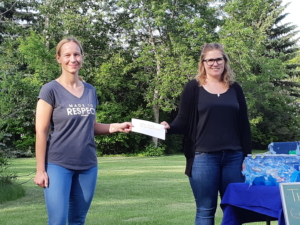
Join us for this psycho-educational group that offers an introduction to mentalization.
This mentalization-based group is designed for individuals that come from broken attachments, are in unhealthy peer attachments and have a history of trauma, sexual abuse and a diagnosis of borderline personality disorder (BPD).
Mentalization-based therapy (MBT) is a specific type of psychotherapy designed to help people with BPD. Its focus is helping people to differentiate and separate out their own thoughts and feelings from those around them.
What are the aims of MBT?
-MBT aims to improve a person’s ability to mentalize in close relationships.
-Having improved mentalizing ability means:
-Experiencing a more stable sense of who you feel you are
-Being less likely to let emotions get the better of you
-When emotions do get the better of you, you are able to regain your composure more quickly
This should mean that you become stronger emotionally, engage in harmful behaviours less, are less likely to get into interpersonal conflicts, and are better able to deal with any conflicts that do arise.
How does MBT help you improve your mentalizing?
To be good at something, you need to practice it. In the MBT program, participants can practice mentalizing skills together with the therapist and other group members.
How is MBT structured?
The MBT program consists of:
- Mentalization-based problem formulation
- Crisis plans
- Psychoeducational group therapy: 12 weekly sessions, each 1.5 hours-long
- Individual therapy: once a week for around 18 months
- Group therapy: weekly sessions of 1.5 hours for around 18 months
- Possible addition of art therapy
- Appointment(s) with psychiatrist for relevant prescriptions if needed
- Collaboration with other agencies on work-related support
What does the therapist do in MBT?
MBT therapists may provide advice directly, but they mainly try to think and reflect with you about problems to help you gradually develop your own solutions. This means taking on a curious and ‘not-knowing’ attitude about yourself and others – other patients in the group and people in your everyday life – particularly about experiences, thoughts and feelings.
What does the patient do in MBT?
-To make good use of treatment, patients are encouraged to:
-Talk about events from their own lives, especially recent events that have been stressful
-Try to understand more about these events, using a curious, open and ‘not-knowing’ attitude
-Allow other group members to take part in this process by exploring their own problems and other people’s problems in the same way
-Work with the therapist and the other group members in the same way, to understand events that happen within the group
-Try to develop a constructive relationship with the group members and the therapist
As part of the program, patients are encouraged not to have contact between each other outside of the therapy sessions. If they do so, they should try to talk about these contacts in the therapy sessions.
What else do I need to know?
The individual and group therapists meet regularly and discuss how therapy is going.
The group therapist does not usually mention in the group anything he or she has discussed with patients in individual sessions. You, the patient, get to choose what you want to talk about, and when.
However, sometimes the group therapist can address specific serious topics directly, even if the patient does not want to talk about them. For instance, these may relate to violence or threats, serious breaches of the treatment contract, or suicide attempts.
The group is facilitated by Michelle Moger and CASASC therapists.
Find out more info and/or to reserve your spot email casasc@casasc.ca or call 403-340-1124.










